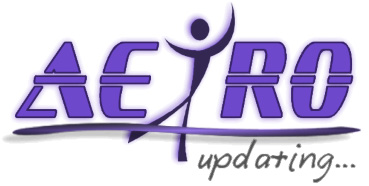Jammu & Kashmir Services Selection Board
Drawing Instructor
Multiple Choice Based Written test
Reference Guidelines and Syllabus 120 Marks/120 Minutes
A) 25 Marks
Semiconductors, Diode and its application as rectifiers, various types of diodes, Operation of PNP and NPN transistors.
Digital logic gates, Number System,
Basics of measurement, Voltage, current and resistance measurement, Cathode ray oscilloscope-Its construction and block diagram.
Amplitude, frequency and phase modulation.
Introduction to Printed circuit boards
Thyristors and its applications.
Principle of operation and applications of various types of transducers.
B) Engineering Drawing. 10 Marks
- Drawingofficepractice,LinesandLettering.
- Dimensioning.
- SimpleGeometricalConstructionsusedinEngineeringPractice.
- Scale
- Principlesofprojection.
- Sectionalviews.
- Isometric views
- Developmentofsurfaces.
- Screw threads and Threaded fasteners.
- Keys and cotters.
- Rivets and Riveted joints.
- Couplings
- Symbols and conventions. 14.AUTO CAD
2. General Workshop Practice 10 Marks
- Carpentry Shop: Types of wood, functions and use of commonly used hand tools, care, maintenance of tools and safety measures to be observed. Wooden Joints, their relative advantages and uses.
- Fitting Shop: Introduction to fitting shop tools, common materials used in fitting shop, Identification of materials.
- Welding Shop: Introduction to welding and its Importance in engineering practice; Types of welding; common materials that can be welded, Introduction to welding equipment, Electric arc welding, Gas welding, Spot/Seam welding, TIG and MIG welding
- Electric Shop-1: Common electrical materials, electrical safety measures, common electrical appliances.
- Smithy shop: Demonstration and detailed explanation of tools and equipments used. Forging operation in smithy shop. Safety measures to be observed in the smithy shop.
- Sheet metal shop-1: Introduction to sheet metal shop, use of hand tools and accessories.
Remain Updated with all the Notifications from JKSSB. Like their Facebook Page below:
C) .
Force system, Moment of force, centre of gravity, simple machines, torsion in shafts/ bars, Moment of inertia, Concept of pure/simple bending, bending moment and shear force.
10 Marks
Septic tank, drains and severs, Bathroom and WC, Road geometrics, Sewerage system, chain surveying, timber and wood based products, stone masonry, doors and windows, stair cases
10 Marks
Properties of concrete, transportation of concrete, Analysis of rates, Cross drainage works, Bonds, foundations, flooring, Simple circular curves.
10 Marks
D) 20 Marks
information technology, its concept and scope.
Generation of computer, block diagram of computer, input/output devices. Introduction to operating system such as MS DOS , windows.
Basics of networking- LAN, MAN, WAN and topologies.
MS-office (MS-word, excel and PowerPoint).
Internet and its applications.
E) 25 Marks
- Basic Electrical Quantities.
Basic concept of charge, current, voltage, resistance, power, energy and their unitsConversion of units of work, power and energy from one form to another - Ohm’s law, resistances in series and parallel.Kirchhoff’s laws and their applicationsin solving electrical network problems. Basic idea about primary and secondary cells
- Introduction to electromagnetism, Magnetic field around a straight current carrying conductor and a solenoid and methods to find its direction, force between twoparallel current carrying conductors. Concept of hyteresis, loop and hysteresis loss
- Faraday’s Laws of electromagnetic induction. Lenz’s law. Fleming’s Right and LeftHand Rule
- Difference between a.c and d.c. Concept of alternating current and voltage, equationof instantaneous values, average value, r.m.s value, form factor. Power factor andits practical significance. Advantages of 3 phase over single phase system.
- Basic concept of — conductors and insulators
- Various Electrical Symbols used in Domestic and Industrial Installation and PowerSystem as per BIS.
- Study of electrical safety measures as mentioned in the Electricity Rules and shocktreatment including first aid. Tools, accessories and instruments required for installation, maintenance and repair work Of Electrical equipment. Different types of wire Joints. Types of Domestic Wiring.
- Elementary concept of an electrical machine. Comparison of generator and motor. Types of DC machines. Starter-Need and Purpose. Basic Principle and EMF equation of Transformer. Transformer accessories. Types and uses of Single phase induction Motors. Types of Electrical measuring Instruments and their applications.
- Main resources of energy, conventional and non-conventional. Substation Components. Power Tariff—-Types
- Definition: Luminous flux, solid angle, luminous intensity, illumination, luminous efficiency, depreciation factor, coefficient of utilization, space to height ratio, reflection factor, glare, shadow, lux.
Laws of illumination.




